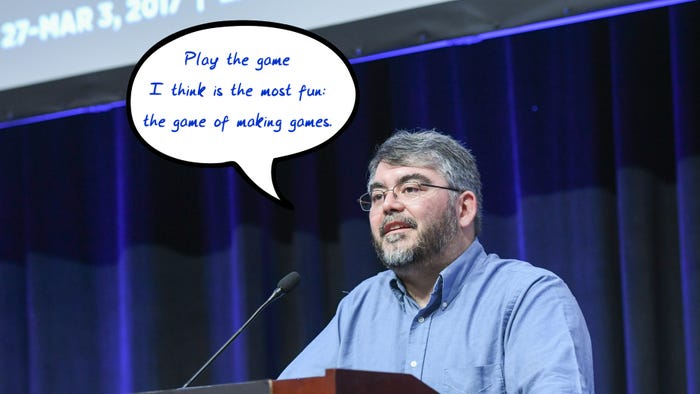Devs share an inside look at Armello's games-as-a-service success
At GDC 2019 today League of Geeks lead producer Lisy Kane took to the stage to share some of what the Armello team learned while hustling to treat the game like a service.

At GDC 2019 today League of Geeks lead producer Lisy Kane took the stage to share some of what the Armello team learned while hustling to treat the game like a service.
The game launched in 2015, and since then League of Geeks has kept feeding in a steady stream of updates while rolling it out on new platforms, keeping a steady stream of revenue coming in long after the game's debut.
Kane explained that while Armello was never designed to be a live game, the studio quickly saw an opportunity to begin nurturing it like one -- but it required a significant overhaul of how the team approaches game development.
“For a game like Armello that was never meant to be games-as-a-service, we’ve really had to adapt and refine our process over time,” said Kane, noting that this approach is most fruitfuil on platforms like Steam where updates are (comparatively) painless.
“Console for us hasn’t been a [as much of a good] home for games-as-a-service as we’ve hoped,” said Kane, explaining that the team found it much easier to push updates to Armello on Steam vs. the console versions since the hurdles involved are much lower.
In-game events help keep players coming back
Kane went on to share some bite-sized tips for fellow devs hoping to adapt their own projects to fit a games-as-a-service model. Keeping players coming back is key, obviously, and Kane noted that Armello capitalizes on its systems and loot options to keep players engaged with regular in-game events.
One week there might be a special set of house rules to play by, for example, while another week might have some special holiday-themed dice players can use.
Free brand-name updates ever 8-12 weeks
League of Geeks also regularly pushes free Armello updates to Steam that include a variety of changes, from quality-of-life improvements to gameplay tweaks and new content. These are always free and have enough new stuff to grab players' attention on a regular basis.
A slide from Kane's talk illustrating the revenue bumps that come from an 8-week update cadence
“What we found is that hte sweet spot for us is a update every eight weeks,” said Kane, referrig specifically to these free updates. “For us we’ve found you really don’t want to go longer than twelve weeks between updates, because the you’re losing players."
Paid DLC packs can drive player excitement and regular revenue bumps
Armello also gets less frequent downloadable content packs that come with a price tag, which Kane says keeps players excited and gives League of Geeks regular lifts in revenue. She added that while the team works closely with the community to decide what to work on for these DLC packs (and for all Armello updates), it's important for devs to take feedback from the community only when it helps you achieve your vision for the project.
“The features that we decide to work on come from a combination of our development team (ideas and updates), our directors and founders (goals to work towards), and community feedback," Kane said. “We believe that the ideal relationship between a developer and community is that they’re not necessarily telling you what to make, but that you’re weaponizing them to help you bring your vision to life.”
She also dropped in a few hot tips throughout the talk which might be worth your time, starting with a strong shoutout for automated QA testing setups.
Hot tip: Automated testing is clutch in live game dev
“At League of Geeks we have a set of 12 PCs set up, and these are to run multiplayer sessions of Armello,” said Kane. "Unlike our QA staff, these machines work 24 hours a day, seven days a week, 70 tests every hour, roughly around 1600 tests a day, per machine. What that means is that once a feature, task, or bug is complete, it’s put ito a release branch or patch branch ad run through the automated testing suite before our QA team eve has a chance to test it. That means we’re picking up bugs hours before our QA team has even had a chance to look at them.”
Hot tip: Don't release an update on a Friday after 4 PM
Kane reminded devs not to set themselves up for failure by avoiding (whenever possible) releasing updates when the team wouldn't be well-positioned to deal with them. For the Australian studio League of Geeks, this meant that shipping builds at the end of the day (on a Friday or otherwise) proved to be painful timing.
“Generally when we’re going home, people are waking up and starting to play the game,” said Kane. “I think we’ve broken this rule once, because we knew we had the data," but in general you should never break this rule.
Tip: Set up an in-game reporting tool
Armello has a fleshed-out in-game bug reporting tool that lets players write out what happened, how they did it, and what the devs can try to reproduce it. Kane says having this tool helps players feel listened to, and it helps keep their negative feedback off more public channels.
“It meas we’re getting awesome feedback from the community immediately,” said Kane. “Without them having to go on Steam, or on Twitter, to talk about the problems they’re having.”
Tip: Set up an in-game news/updates feed
Armello has a in-game update pane which lets players know what's in the latest update and what's coming soon, and Kane says this is exactly the kind of thing your game needs if you want it to feel alive.
In closing, Kane had a three-step recipe for anyone looking to turn their work into a live game: Identify which parts of your game would be a good games-as-as-service, create a production process that lets you regularly and reliably ship updates, and get your team ready to do so.
Read more about:
event gdcAbout the Author(s)
You May Also Like








